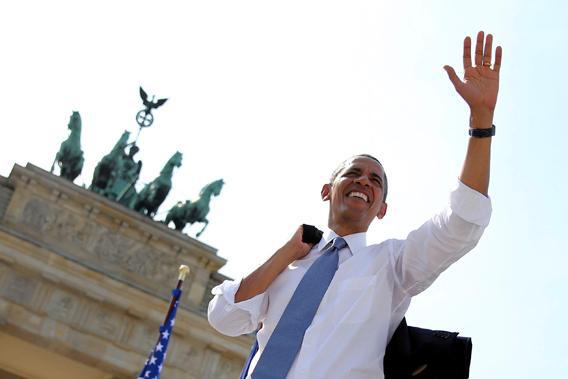On Tuesday, President Obama tried two presidential adaptation strategies. The first was holding a White House meeting with congressional leaders about immigration reform. The second was an end-run around those same leaders with a speech announcing that the Environmental Protection Agency will regulate greenhouse-gas emissions from existing power plants.
Both are methods of dealing with the same obstacle: a Congress the president cannot bend to his will. On immigration, Obama has responded to this reality by stepping back. On climate change, he is stepping forward.
Adaptation is a crucial quality for life and business, as Tim Harford explains in his great book Adapt: Why Success Always Starts With Failure. Adaptation allows you to recover from failure, a necessary requirement for risk-taking and creativity, crucial attributes for any leader. Adaptation is also a key requirement of the presidency, because the reality of the president’s job is very different than the speculation of a campaign.
Congress also repeatedly tests a president’s adaptive skill. It changes every two years. And in the current age of partisanship, a president can’t expect to deploy LBJ strategies. Those won’t work in a Senate where a president’s plans must get 60 votes and in the House where conservatives don’t even listen to their own leadership, let alone the hated president of the opposite party.
Faced with these obstacles and a Constitution that limits executive power, a president must find another way. He must achieve the “bold, persistent experimentation,” that FDR championed to find a way around the sclerosis of Washington. Understanding adaptability helps us measure the current president and make smarter choices when picking the next nominees.
Unfortunately, presidents aren’t judged on adaptability. They are measured often by how they perform set-piece routines—using the bully pulpit or schmoozing Congress or twisting arms—without much assessment of whether those tools are inefficient, antiquated, or broken. This isn’t to say that President Obama is good at congressional relations. He’s not. But he could be fantastic at congressional relations and still not win the day. Rep. Rob Andrews, a New Jersey Democrat, said in a recent Politico article that the president was weak for not threatening Senate Democrats who voted against gun control, but how useful would that strategy have been? It still wouldn’t have gotten Obama the votes he needed to pass the bill.
When a president doesn’t succeed at the set pieces, he is graded as wanting. Or, when he changes tactics, he’s seen as weak. In some circles, President Obama’s effort to move climate regulations is seen as a weakness because he cannot get Congress to do what he wants. But what if Congress is immovable on this question (it is!) and the president—in the spirit of experimentation and determination—is trying any other avenue he can find? The relentless search for alternatives to achieve an outcome is usually seen as a key sign of leadership. If you don’t succeed, try, try again. In the case of climate change, time is running out, and the president has embraced the least bad option. If he doesn’t finalize the regulations for greenhouse-gas emissions before he leaves the White House, a Republican president or a Senate with a new Republican majority could undo them.
This doesn’t mean this is good policy or the right approach, but it argues for adding adaptation to the evaluation of a president’s skills as an executive.
President Obama is also considered weak for not using his ability to rally the country to change Congress. He is criticized for his lack of congressional schmoozing and his inability to twist arms. But immigration reform is proceeding toward possible passage because he has consciously chosen not to do those things. He has given very few speeches and not meddled in the congressional process. His administration has tried to be helpful behind the scenes, but Obama has been circumspect.
Absenting himself from the debate is helping because Republicans are debating immigration among themselves. It would be easier for a House Republican who opposes comprehensive immigration reform to argue against it if President Obama were on the other side. As Pennsylvania Republican Sen. Pat Toomey said of the vote on the gun-control measure, some of his colleagues voted against it simply because President Obama was for it. “There were some on my side who did not want to be seen helping the president do something he wanted to get done, just because the president wanted to do it,” he said.
If adaptation is a laudable presidential quality, it is also not sufficient for success. Your adaptation can be weak. Adaptation is nothing without creativity, and on that front, President Obama has been a pretty conventional president. After the Newtown, Conn., massacre, the president tried to transform public outrage into political pressure. When that failed, senior Obama aides said it was because Second Amendment supporters were more passionate than those advocating gun control. That was a predictable truth easily foreseen the day after the shooting. It should have prompted a creative strategy to overcome it. It didn’t.
That’s admittedly not a satisfying critique. If it’s insufficient to criticize the president for not applying tools that won’t work, it’s also unsatisfying to demand that a president adapt and find an exit ramp where one does not appear to exist. But we judge leaders on results, not their cogent explanation of all the problems they face, which is why it is important to adapt to get around those problems. Great leaders create new pathways in impossible situations.
